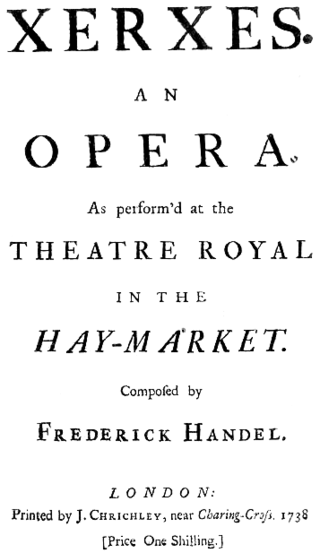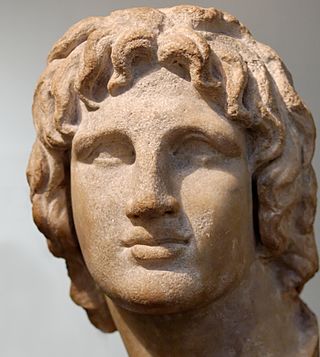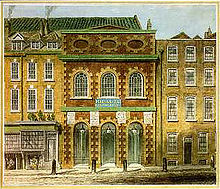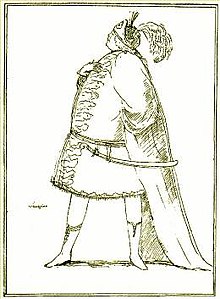
Serse is an opera seria in three acts by George Frideric Handel. It was first performed in London on 15 April 1738. The Italian libretto was adapted by an unknown hand from that by Silvio Stampiglia (1664–1725) for an earlier opera of the same name by Giovanni Bononcini in 1694. Stampiglia's libretto was itself based on one by Nicolò Minato (ca.1627–1698) that was set by Francesco Cavalli in 1654. The opera is set in Persia about 470 BC and is very loosely based upon Xerxes I of Persia. Serse, originally sung by a mezzo-soprano castrato, is now usually performed by a female mezzo-soprano or countertenor.

Rodelinda, regina de' Longobardi is an opera seria in three acts composed for the first Royal Academy of Music by George Frideric Handel. The libretto is by Nicola Francesco Haym, based on an earlier libretto by Antonio Salvi. Rodelinda has long been regarded as one of Handel's greatest works.

Flavio, re de' Longobardi is an opera seria in three acts by George Frideric Handel. The Italian-language libretto was by Nicola Francesco Haym, after Matteo Noris's Flavio Cuniberto. It was Handel's fourth full-length opera for the Royal Academy of Music. Handel had originally entitled the opera after the character of Emilia in the opera.

Radamisto is an opera seria in three acts by George Frideric Handel to an Italian libretto by Nicola Francesco Haym, based on L'amor tirannico, o Zenobia by Domenico Lalli and Zenobia by Matteo Noris. It was Handel's first opera for the Royal Academy of Music. The opera's plot is loosely based on incidents from Tacitus's Annals of Imperial Rome.

Alessandro, is an opera composed by George Frideric Handel in 1726 for the Royal Academy of Music. Paolo Rolli's libretto is based on the story of Ortensio Mauro's La superbia d'Alessandro. This was the first time the famous singers Faustina Bordoni and Francesca Cuzzoni appeared together in one of Handel's operas. The original cast also included Francesco Bernardi who was known as Senesino.

Tamerlano is an opera seria in three acts by George Frideric Handel. The Italian libretto was by Nicola Francesco Haym, adapted from Agostino Piovene's Tamerlano together with another libretto entitled Bajazet after Nicolas Pradon's Tamerlan, ou La Mort de Bajazet. The opera was staged by the Royal Academy of Music in the King's Theatre at the Haymarket, London.

Teseo is an opera seria with music by George Frideric Handel, the only Handel opera that is in five acts. The Italian-language libretto was by Nicola Francesco Haym, after Philippe Quinault's Thésée. It was Handel's third London opera, intended to follow the success of Rinaldo after the unpopular Il pastor fido.

Riccardo primo, re d'Inghilterra is an opera seria in three acts written by George Frideric Handel for the Royal Academy of Music (1719). The Italian-language libretto was by Paolo Antonio Rolli, after Francesco Briani's Isacio tiranno, set by Antonio Lotti in 1710. Handel wrote the work for the Royal Academy's 1726–27 opera season, and also as homage to the newly crowned George II and the nation where Handel had just received citizenship.

Scipione, also called Publio Cornelio Scipione, is an opera seria in three acts, with music composed by George Frideric Handel for the Royal Academy of Music in 1726. The librettist was Paolo Antonio Rolli. Handel composed Scipione whilst in the middle of writing Alessandro. It is based on the life of the Roman general Scipio Africanus. Its slow march is the regimental march of the Grenadier Guards and is known for being played at London Metropolitan Police passing out ceremonies.

Tolomeo, re d'Egitto is an opera seria in three acts by George Frideric Handel to an Italian text by Nicola Francesco Haym, adapted from Carlo Sigismondo Capece's Tolomeo et Alessandro. It was Handel's 13th and last opera for the Royal Academy of Music (1719) and was also the last of the operas he composed for the triumvirate of internationally renowned singers, the castrato Senesino and the sopranos Francesca Cuzzoni and Faustina Bordoni.

Sosarme, re di Media is an opera by George Frideric Handel written in 1732 for the King's Theatre in the Haymarket, London, where it ran for 12 performances. The text was based on an earlier libretto by Antonio Salvi, Dionisio, Re di Portogallo, and adapted by an unknown writer. The original setting of Portugal was changed to Sardis in Lydia.

Ottone, re di Germania is an opera by George Frideric Handel, to an Italian–language libretto adapted by Nicola Francesco Haym from the libretto by Stefano Benedetto Pallavicino for Antonio Lotti's opera Teofane. It was the first new opera written for the Royal Academy of Music (1719)'s fourth season and had its first performance on 12 January 1723 at the King's Theatre, Haymarket in London. Handel had assembled a cast of operatic superstars for this season and the opera became an enormous success.

Siroe, re di Persia, is an opera seria in three acts by George Frideric Handel. It was his 12th opera for the Royal Academy of Music and was written for the sopranos Francesca Cuzzoni and Faustina Bordoni. The opera uses an Italian-language libretto by Nicola Francesco Haym, after Metastasio's Siroe. Like many of Metastasio's libretti, it was also set by Handel's contemporaries, e.g. by Leonardo Vinci, Antonio Vivaldi and Johann Adolph Hasse. Pasquale Errichelli's setting of the libretto premiered in the year of Handel's death.

Arianna in Creta is an opera seria in three acts by George Frideric Handel. The Italian-language libretto was adapted by Francis Colman from Pietro Pariati's Arianna e Teseo, a text previously set by Nicola Porpora in 1727 and Leonardo Leo in 1729.

Lotario is an opera seria in three acts by George Frideric Handel. The Italian-language libretto was adapted from Antonio Salvi's Adelaide.The opera was first given at the King's Theatre in London on 2 December 1729.

Muzio Scevola is an opera seria in three acts about Gaius Mucius Scaevola. The Italian-language libretto was by Paolo Antonio Rolli, adapted from a text by Silvio Stampiglia. The music for the first act was composed by Filippo Amadei, the second act by Giovanni Bononcini, and the third by George Frideric Handel. Collaborations of groups of composers were common in the 18th century, though this is the only one done in London. Bononcini had written the music for two earlier treatments of this story on his own, works dating from 1695 and 1710.

Ezio is an opera seria by George Frideric Handel to a libretto by Metastasio. Metastasio's libretto was partly inspired by Jean Racine's play Britannicus. The same libretto had already been set by many other composers, first of all Nicola Porpora who managed to preempt the official Rome premiere of Pietro Auletta's setting for 26 December 1728 with his own version for Venice on 20 November, a month earlier. The libretto continued to be set and reset for another 50 years, including two versions of Ezio by Gluck. Handel's Ezio is considered one of the purest examples of opera seria with its absence of vocal ensembles.

Roberta Invernizzi is an Italian soprano. She originally studied piano and double bass before turning to singing. She specialises in early music from the baroque and classical period of music.

Partenope is an opera by George Frideric Handel, first performed at the King's Theatre in London on 24 February 1730. Although following the structure and forms of opera seria, the work is humorous in character and light-textured in music, with a plot involving romantic complications and gender confusion. A success with audiences at the time of its original production and then unperformed for many years, Partenope is now often seen on the world's opera stages.

Admeto, re di Tessaglia is a three-act opera written for the Royal Academy of Music with music composed by George Frideric Handel to an Italian-language libretto prepared by Nicola Francesco Haym. The story is partly based on Euripides' Alcestis. The opera's first performance was at the Haymarket Theatre in London on 31 January 1727. The original cast included Faustina Bordoni as Alcestis and Francesca Cuzzoni as Antigona, as Admeto was the second of the five operas that Handel composed to feature specifically these two prime donne of the day.












